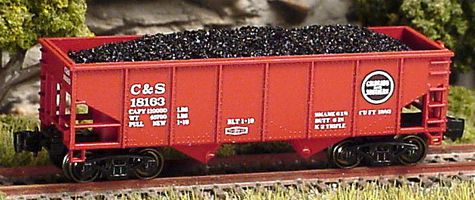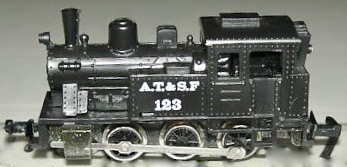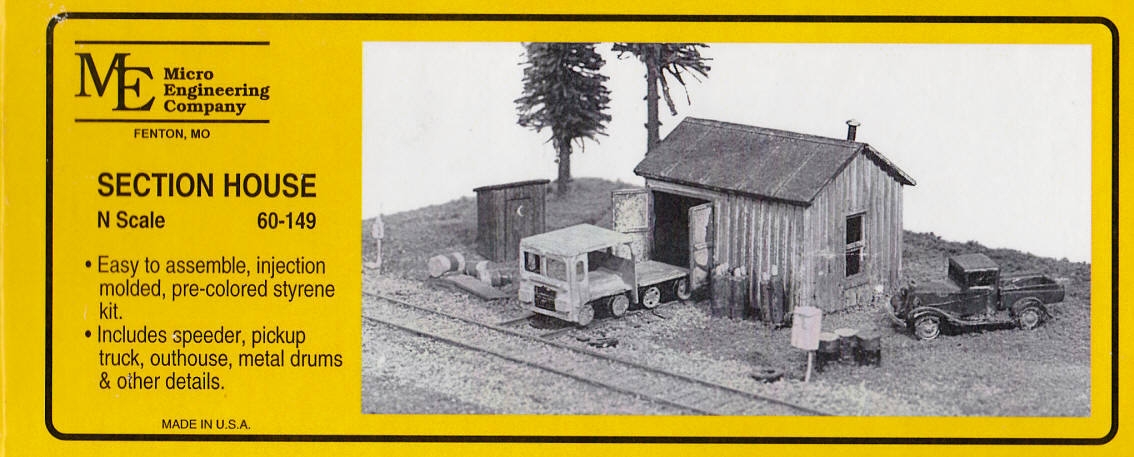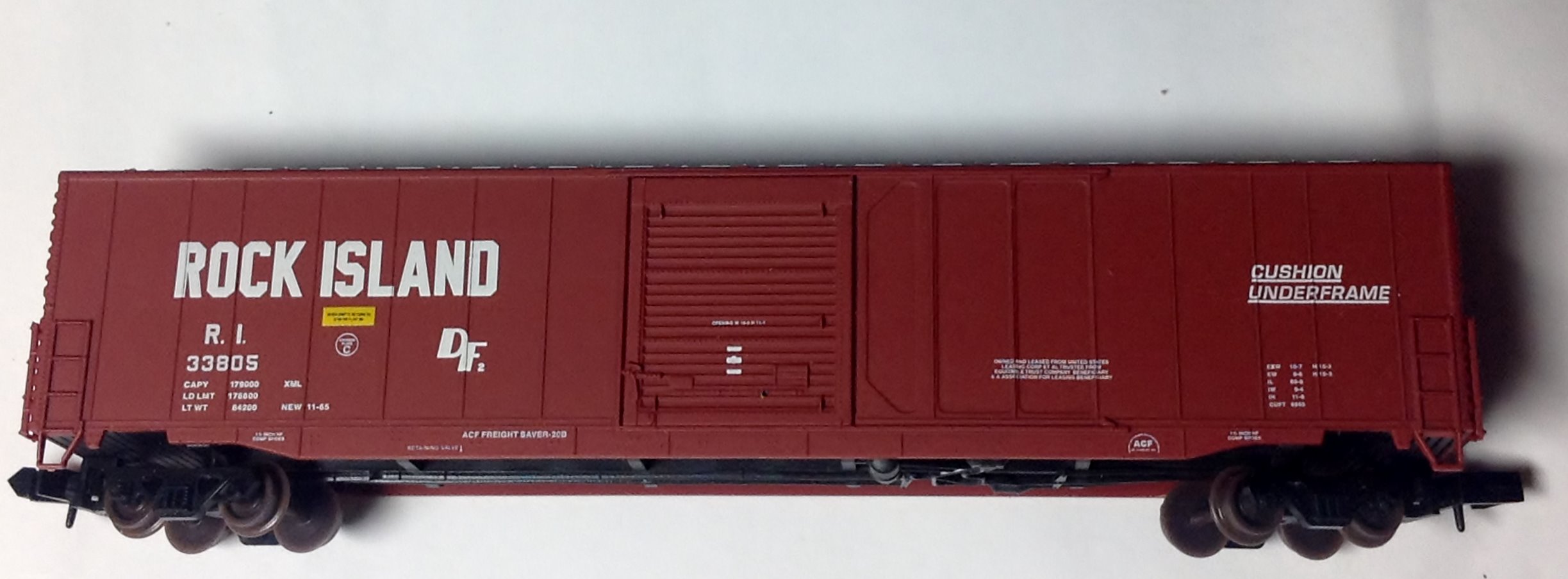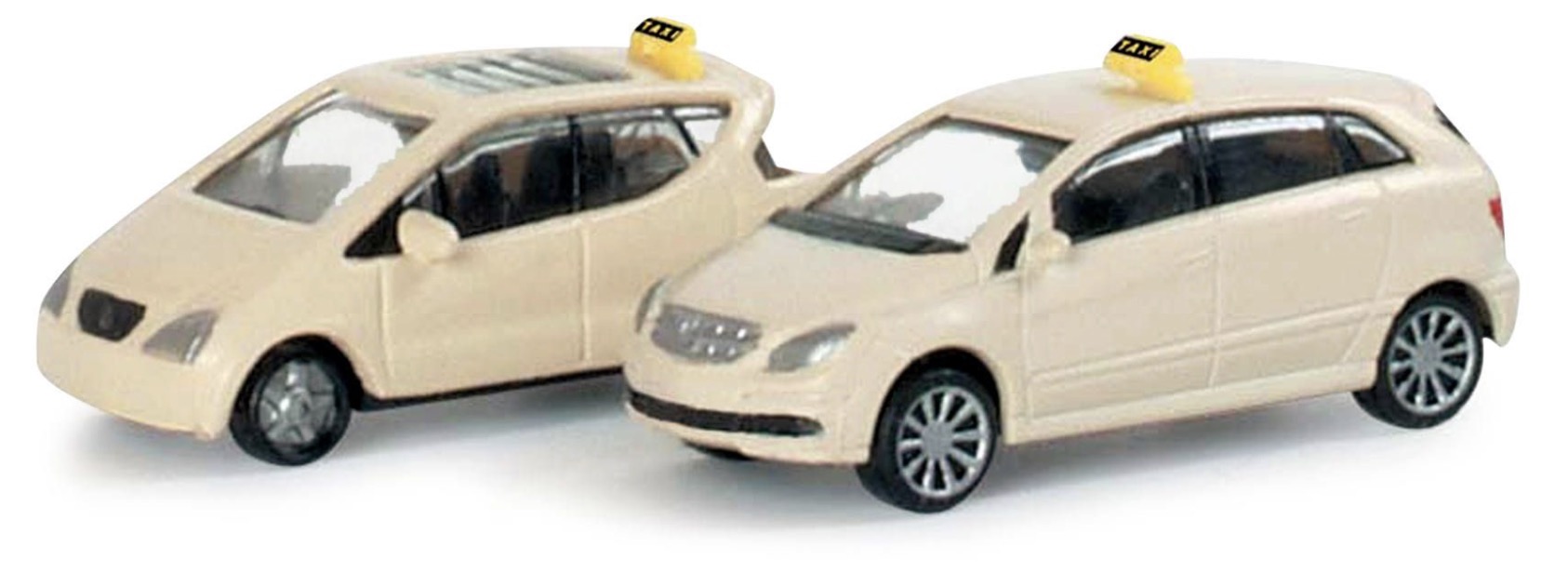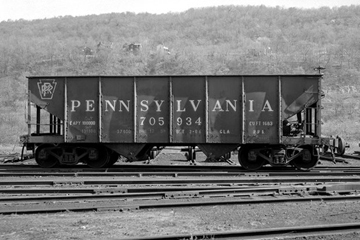Specific Item Information: Road Numbers: C&S 18126 & 18163
Model Information: Some of the most common cars to ride American railroad tracks during the 20th Century, the small, steel-paneled, rib-side, two-bay hoppers were instrumental to the growth of our nation. During the Industrial Age of the USA, coal was King and our appetite for "black diamonds" was sated by these pert little dumpsters. An improvement over drop-bottom gondolas, the self-emptying, gravity-release hopper car became reality during the early 1900s, and fed the fires of our burgeoning economy until well after mid-century. While no longer used for large commercial hauling, these mighty-mites are all-pervasive and found on short-lines still lugging coal, gravel, ore, sand, glass and a variety of bulk materials—an invaluable workhorse even for our contemporary railroads. For your Z Scale enjoyment, Full Throttle presents a universal model of these small omnipresent twin-bay hoppers.
Prototype History: The open hopper is an evolution of the gondola, a simple freight car used for the transportation of various materials without and facility for protection from the elements. The hopper had higher sides than the gondola and possessed a mechanism on the bottom (bay doors) for discharging the load.
2-Bay ribside coal hoppers were in common use in the first half of the 20th century. The ribbed sides added stability so the loads would not bow out the side of the hoppers. Steel was in plentiful supply after the second world wars and these cars were pretty much everywhere coal was being produced or consumed.
2-Bay ribside coal hoppers were in common use in the first half of the 20th century. The ribbed sides added stability so the loads would not bow out the side of the hoppers. Steel was in plentiful supply after the second world wars and these cars were pretty much everywhere coal was being produced or consumed.
Road Name History: 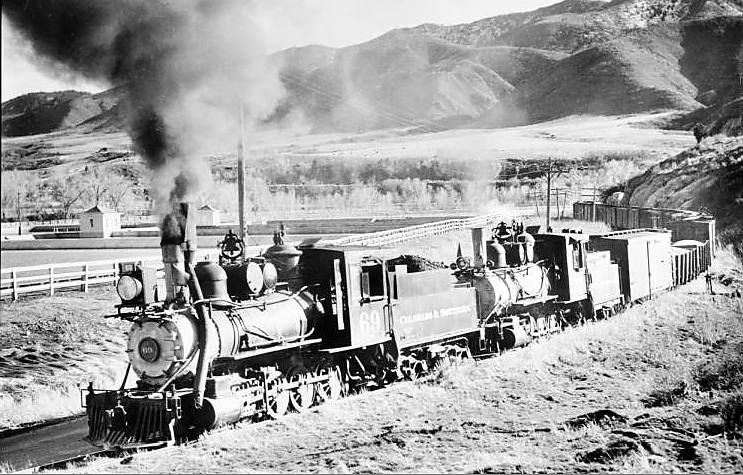 C&S was formed in 1898 with the consolidation of the Union Pacific Denver & Gulf and the Denver Leadville & Gunnison, both of whom had been under the control of Union Pacific prior to falling into receivership. C&S was best known for their 3’ gauge lines built westward from Denver by the Colorado Central (the so called “Clear Creek Lines” to Black Hawk, Central City, and Georgetown including the famous Georgetown Loop) and the Denver South Park & Pacific (southwest to Como, Climax, Leadville and for a short time, Gunnison.) However, the narrow gauge portion was a small fraction of the Colorado & Southern system.
C&S was formed in 1898 with the consolidation of the Union Pacific Denver & Gulf and the Denver Leadville & Gunnison, both of whom had been under the control of Union Pacific prior to falling into receivership. C&S was best known for their 3’ gauge lines built westward from Denver by the Colorado Central (the so called “Clear Creek Lines” to Black Hawk, Central City, and Georgetown including the famous Georgetown Loop) and the Denver South Park & Pacific (southwest to Como, Climax, Leadville and for a short time, Gunnison.) However, the narrow gauge portion was a small fraction of the Colorado & Southern system.
The standard gauge portion started from a point north of Wendover, Wyoming south through Cheyenne, Denver, Colorado Springs, Pueblo, Trinidad and on to Texline on the New Mexico – Texas border. There they connected with their subsidiary Fort Worth & Denver City Railway to Fort Worth and other Texas cities. C&S also controlled the Trinity & Brazos Valley which gave them friendly connections all the way to the port of Galveston. (We’ll cover the FW&D, T&BV and other C&S subsidiaries on future RRotD’s.) The mainline also included the famous “joint line” used by C&S, Santa Fe, and Rio Grande between Denver and Pueblo.
In 1908, Chicago Burlington & Quincy (who connected with C&S in Denver, Cheyenne and Wendover) bought about two thirds of C&S shares and took control. CB&Q was jointly controlled by Great Northern and Northern Pacific and the goal was to secure a through route from the Pacific Northwest to the Gulf of Mexico. C&S adopted CB&Q practices for steam locomotive designs and before long the “Burlington Route” shield appeared on tenders but with C&S lettering on the cabs. Other than that, C&S and FW&D were left to manage their own affairs to a large extent.
In 1937, the old South Park narrow gauge mainline was abandoned leaving only a short stub between Climax and Leadville to connect a molybdenum mine to a standard gauge Rio Grande branch. Four years later, the Clear Creek lines were abandoned and the Climax branch was standard gauged bringing an end to all C&S narrow gauge operations. The Climax branch would go on to host the last regular standard gauge freight service with a steam locomotive by a Class 1 railroad. 2-8-0 #641 would last drop its fire on October 11, 1962.
C&S pressed on through the diesel era with locomotives in CB&Q and later successor Burlington Northern paint but sub-lettered for C&S. Colorado & Southern was finally merged into Burlington Northern on the last day of 1981.

The standard gauge portion started from a point north of Wendover, Wyoming south through Cheyenne, Denver, Colorado Springs, Pueblo, Trinidad and on to Texline on the New Mexico – Texas border. There they connected with their subsidiary Fort Worth & Denver City Railway to Fort Worth and other Texas cities. C&S also controlled the Trinity & Brazos Valley which gave them friendly connections all the way to the port of Galveston. (We’ll cover the FW&D, T&BV and other C&S subsidiaries on future RRotD’s.) The mainline also included the famous “joint line” used by C&S, Santa Fe, and Rio Grande between Denver and Pueblo.
In 1908, Chicago Burlington & Quincy (who connected with C&S in Denver, Cheyenne and Wendover) bought about two thirds of C&S shares and took control. CB&Q was jointly controlled by Great Northern and Northern Pacific and the goal was to secure a through route from the Pacific Northwest to the Gulf of Mexico. C&S adopted CB&Q practices for steam locomotive designs and before long the “Burlington Route” shield appeared on tenders but with C&S lettering on the cabs. Other than that, C&S and FW&D were left to manage their own affairs to a large extent.
In 1937, the old South Park narrow gauge mainline was abandoned leaving only a short stub between Climax and Leadville to connect a molybdenum mine to a standard gauge Rio Grande branch. Four years later, the Clear Creek lines were abandoned and the Climax branch was standard gauged bringing an end to all C&S narrow gauge operations. The Climax branch would go on to host the last regular standard gauge freight service with a steam locomotive by a Class 1 railroad. 2-8-0 #641 would last drop its fire on October 11, 1962.
C&S pressed on through the diesel era with locomotives in CB&Q and later successor Burlington Northern paint but sub-lettered for C&S. Colorado & Southern was finally merged into Burlington Northern on the last day of 1981.
Brand/Importer Information: Greetings, I'm Will, a Fine Arts graduate of Kutztown University in Pennsylvania who grew up in the Delaware Valley. I worked for 30 years with the Pennsylvania German Folklife Society. For ten years I had a permanent booth, each month showing my "PA Dutch" wares, at the country's largest under-roof Antique Market in Atlanta, GA. When Mom and Dad started to have health issues, I was forced to give up the nomadic life, but during my travels I came to love Z Scale Model Railroading, as I could easily take small layouts with me to the motels and play with my trains in the evenings!
Now that Mom and Dad are gone, and after many years of providing care for my "Pappy" in Florida, I find myself a homebody in the "Sunshine State" with a neat little business, supplying interested Z hobbyists with rolling stock and unique quality products!
Item created by: CNW400 on 2021-08-26 09:37:08
If you see errors or missing data in this entry, please feel free to log in and edit it. Anyone with a Gmail account can log in instantly.
If you see errors or missing data in this entry, please feel free to log in and edit it. Anyone with a Gmail account can log in instantly.


